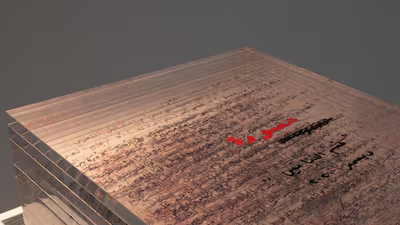














Shamma Al Amri unpacks the Arabic language in her new exhibition at Tashkeel
The Emirati artist explores the many meanings and contexts of the word 'sah', meaning 'correct', through a variety of mediums
Afshan Ahmed
September 17, 2022















September 17, 2022